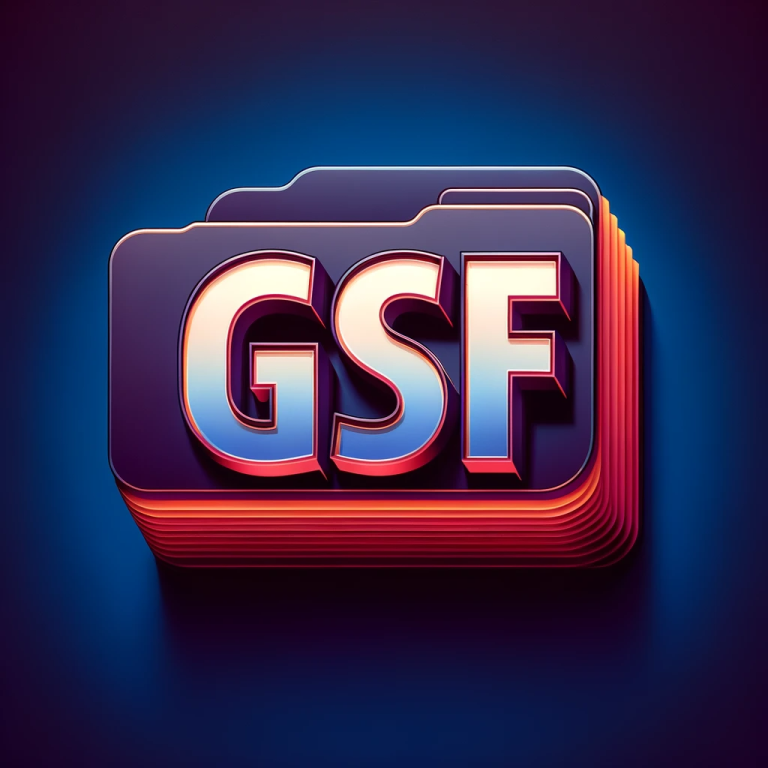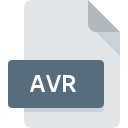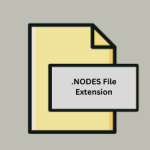.GSF File Extension

Game Boy Advance Sound File
| Developer | Caitsith2 and Zoopd |
| Popularity | |
| Category | Audio Files |
| Format | .GSF |
| Cross Platform | Update Soon |
What is an GSF file?
In the world of gaming and technology, file extensions often carry a great deal of significance. They determine the type and purpose of a file, facilitating its proper handling and usage.
One such file extension that has played a crucial role in the realm of gaming is the .GSF file extension, which stands for Game Boy Advance Sound File.
In this comprehensive article, we will delve into the origins, history, file structure, technical specifications, advantages, disadvantages, and how to convert and open .GSF files on various operating systems.
More Information.
When the Game Boy Advance was introduced, it marked a significant leap in portable gaming.One limitation was the absence of advanced audio capabilities.
To address this, Nintendo introduced the Game Boy Advance Sound System (GBASS) as part of the Game Boy Advance Development Kit.
The GBASS allowed developers to compose and play back music and sound effects in their games, which was essential for enhancing gameplay immersion.
The .GSF file extension emerged as the format for storing these soundtracks. It was a proprietary format, primarily used for developing games on the GBA platform.
By storing sound data in .GSF files, game developers could create engaging and dynamic audio experiences that complemented the gameplay.
Origin Of This File.
The .GSF file extension was born alongside the Game Boy Advance (GBA), a handheld gaming console developed by Nintendo in 2001.
These files were designed to store sound data, allowing developers to incorporate high-quality audio into their games while maintaining a compact file size.
Game Boy Advance Sound Files soon became an integral part of GBA gaming experiences, contributing to the immersive auditory environment that players enjoyed.
File Structure Technical Specification.
Understanding the structure and technical specifications of .GSF files is essential for working with them effectively.
.GSF files contain sequences of audio commands and data that control how the GBA’s sound hardware produces sounds during gameplay. The file structure consists of several components:
- Header: The header contains metadata about the .GSF file, such as the title, author, copyright information, and more.
- Song Data: This section includes information about the musical composition, such as the notes, instruments, and effects used.
- Sound Engine: The .GSF file contains code for a custom sound engine that interprets the song data and generates the audio output.
- Sample Data: Sample data includes the actual audio samples used in the composition. These samples are stored in a compressed format to minimize file size.
How to Convert the File?
Here’s a step-by-step guide on how to convert .GSF (Game Boy Advance Sound File) to other audio formats like WAV or MP3, with a point of view perspective:
Step 1: Download GSF Central’s GSF Converter:
- Go to the GSF Central website.
- Look for the GSF Converter tool and download it. Make sure to choose the version compatible with your Windows operating system (e.g., Windows 10).
Step 2: Install the GSF Converter:
- Locate the downloaded installer file, which is usually in your Downloads folder.
- Double-click on the installer file to run it.
- Follow the on-screen instructions to complete the installation. You may need to agree to the terms and select installation options.
Step 3: Launch the GSF Converter:
- Once the installation is complete, find the GSF Converter in your Windows Start menu or on your desktop.
- Double-click on the GSF Converter icon to open the software.
Step 4: Load the .GSF File:
- Inside the GSF Converter software, click on the “Open” or “Add” button (the exact wording may vary depending on the software version).
- A file dialog will appear, allowing you to browse your computer for the .GSF file you want to convert.
- Select the .GSF file you want to convert and click “Open.”
Step 5: Choose the Output Format:
- After loading the .GSF file, you will see a drop-down menu or options to choose the desired output format. Common options include WAV or MP3.
- Select your preferred output format from the list.
Step 6: Configure Settings (Optional):
- Depending on the software version, you may have the option to configure settings such as bitrate, sample rate, or audio quality. You can customize these settings if needed. If not, the default settings will be used.
Step 7: Start the Conversion:
- Once you’ve chosen the output format and configured settings (if necessary), click the “Convert” or “Start” button within the software interface.
- The conversion process will begin, and you will see a progress indicator.
Step 8: Save the Converted File:
- After the conversion is complete, the software will prompt you to specify a destination folder for saving the converted audio file.
- Choose a location on your computer where you want to save the file.
Step 9: Wait for the Conversion to Finish:
- The time it takes for the conversion to complete depends on the size of the .GSF file and your computer’s processing speed.
- Wait for the software to finish converting the file.
Step 10: Access the Converted File:
- Once the conversion is done, navigate to the destination folder you selected earlier.
- You will find the converted audio file in the chosen output format (e.g., WAV or MP3).
- You can now use, play, or transfer this converted file to other devices or applications as needed.
Advantages And Disadvantages.
Advantages:
- Compact Size: .GSF files are relatively small, making them ideal for storing music and sound effects in GBA games without consuming excessive storage space.
- High-Quality Audio: Despite their small size, .GSF files can deliver high-quality audio, enhancing the overall gaming experience.
- Customization: Game developers have control over every aspect of the audio playback, allowing them to create unique and immersive soundscapes.
Disadvantages:
- Proprietary Format: .GSF is a proprietary format, meaning it is specific to the GBA platform and not widely compatible with other systems or software.
- Limited Use: As a format designed for GBA games, .GSF files have limited utility beyond their original purpose.
How to Open GSF?
Open In Windows
- Download and install GSF Central’s GSF Player for Windows.
- Launch the GSF Player.
- Open the .GSF file by going to “File” and selecting “Open.”
Open In Linux
- Install a Game Boy Advance emulator like VisualBoyAdvance-M for Linux.
- Open the emulator.
- Load the .GSF file through the emulator’s interface, typically under a “File” or “Open” menu option.
Open In MAC
- Download and install a Game Boy Advance emulator such as VisualBoyAdvance-M for macOS.
- Launch the emulator.
- Load the .GSF file from within the emulator’s interface, often found under a “File” or “Open” option.
Open In Android
- Install a Game Boy Advance emulator like “My Boy!” or “John GBA” from the Google Play Store.
- Open the emulator app.
- Place the .GSF file in a directory on your Android device that the emulator can access.
- In the emulator, navigate to the folder where you stored the .GSF file and select it to begin playing.
Open In IOS
- Install a Game Boy Advance emulator app such as “GBA4iOS” or “Delta Emulator” (availability may vary).
- Launch the emulator app.
- Import the .GSF file to your iOS device, typically via email, cloud storage, or direct download.
- Within the emulator app, locate and open the .GSF file to play it.
Open in Others
- Some multi-platform emulators like RetroArch may be available for various operating systems.
- Download and install the appropriate multi-platform emulator for your system.
- Launch the emulator.
- Open the .GSF file through the emulator’s interface, following the emulator’s specific file-opening procedures.













